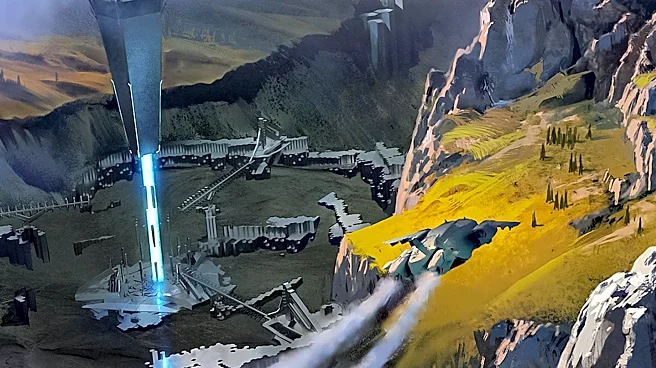What's Happening?
In 1973, MIT researchers developed a model predicting the potential decline of civilization by 2040. This model, known as World3, was part of a study published by the Club of Rome titled 'The Limits to
Growth.' It used equations to analyze population growth, industrial output, resource consumption, and pollution levels. The model suggested that humanity might reach peak prosperity around 2030, followed by a decline leading to a downgraded version of civilization by 2040. The prediction was not about a sudden apocalypse but rather a gradual decline characterized by food shortages, reduced living standards, political instability, and increased mortality rates. Recent analyses by researcher Gaya Herrington indicate that current global trends align with two scenarios from the original model: a collapse track and a comprehensive technology track, both suggesting challenges ahead.
Why It's Important?
The significance of this prediction lies in its implications for global policy and sustainability efforts. The model underscores the risks of pursuing infinite growth on a finite planet, highlighting the need for strategic planning and resource management. If the predicted decline occurs, it could lead to widespread economic and social disruptions, affecting industries, governments, and communities worldwide. The scenarios suggest that without significant changes in policy and technology, society may face severe challenges in maintaining current living standards. This serves as a call to action for policymakers, businesses, and civil society to prioritize sustainable practices and equitable resource distribution to mitigate potential adverse outcomes.
What's Next?
Future actions will likely focus on addressing the issues highlighted by the model, such as resource management and technological innovation. Policymakers may need to implement reforms aimed at sustainability and equity to prevent the predicted decline. The global community might see increased efforts in clean energy adoption, population control measures, and international cooperation to tackle climate change and resource scarcity. Stakeholders, including governments, businesses, and non-profit organizations, will play crucial roles in shaping the trajectory of civilization's future, potentially averting the predicted decline through proactive measures.
Beyond the Headlines
The ethical and cultural dimensions of this prediction involve rethinking humanity's relationship with the planet and each other. It challenges the notion of perpetual growth and prompts discussions on the moral responsibilities of current generations to future ones. The prediction also raises questions about the role of technology in society and whether it can be harnessed to create a sustainable future. Long-term shifts may include changes in consumption patterns, increased emphasis on environmental education, and a reevaluation of economic models that prioritize growth over sustainability.











